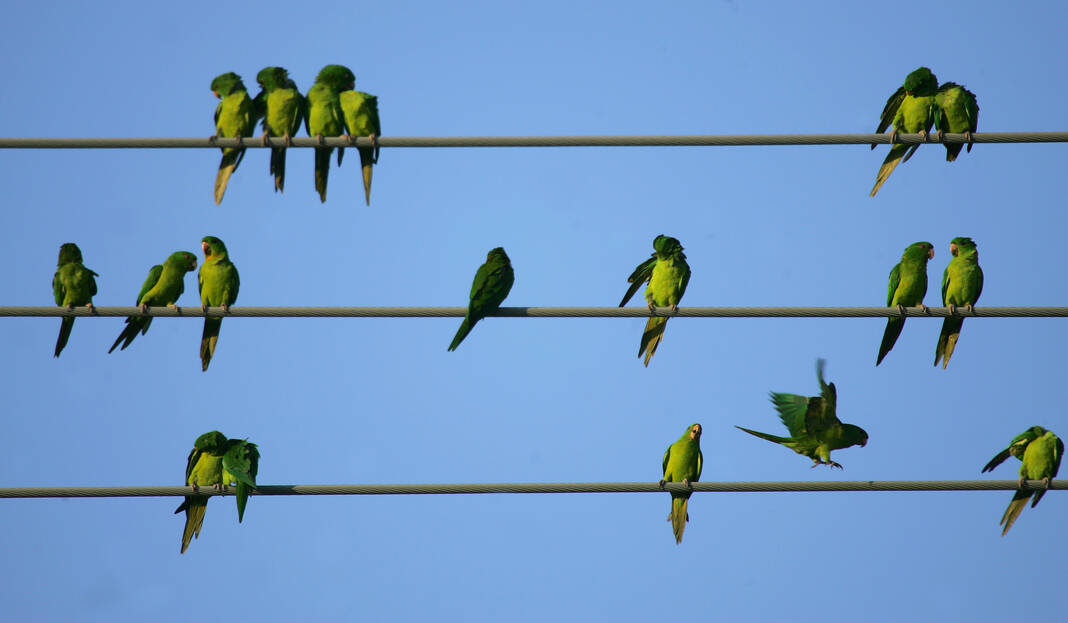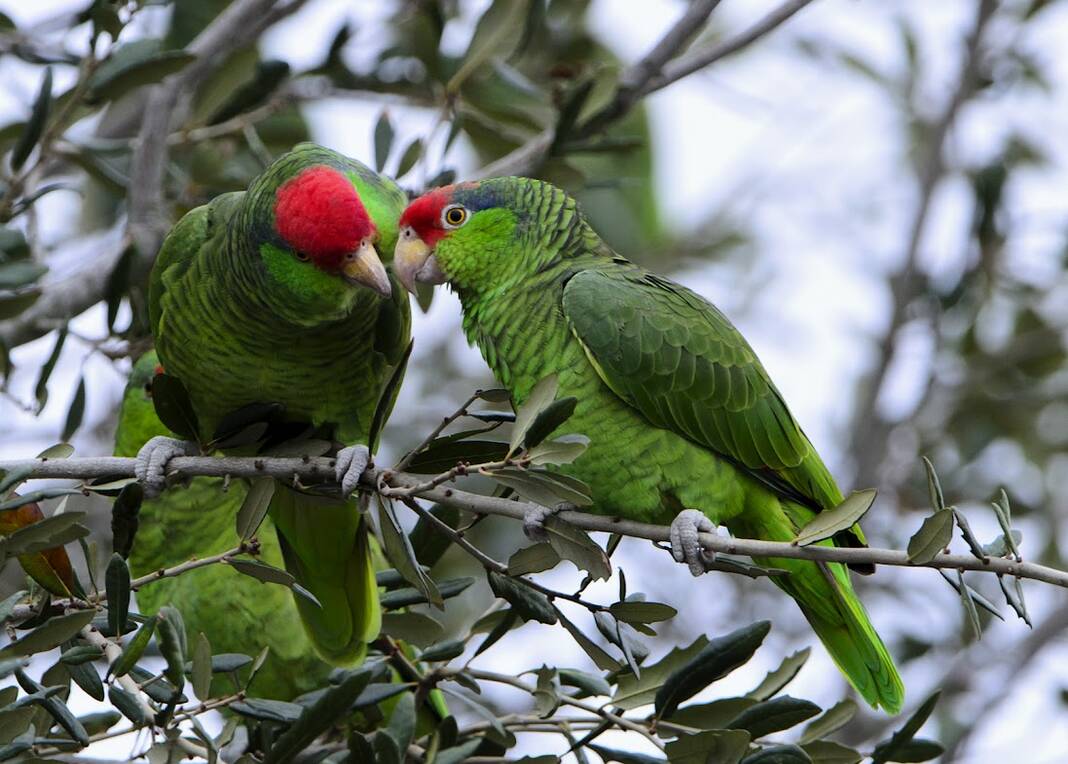|
Only have a minute? Listen instead
Getting your Trinity Audio player ready...
|
By NOOR ADATIA | Dallas Morning News
Red-crowned parrots, an endangered species native to northeast Mexico, have found a new and safer home in parts of South Texas, according to a new study led by researchers at Texas A&M University.
Most people don’t picture the exotic-looking bird living in the United States — much less Texas — said Simon Kiacz, a graduate student at the university who worked extensively on the research project. Findings from the study were published in the scientific journal Diversity last week.
However, due to favorable conditions and a lack of competition for resources, about 900 red-crowned parrots have found refuge among trees and various nooks in the cities of Brownsville, Harlingen, Weslaco and McAllen.
The parrots, which are mostly green with red feathers on their heads, originally moved to Texas in the illegal animal trade, according to a news release from the university. Poachers used to steal eggs or young chicks from their nests and sell them for hundreds of dollars.
The illegal trade of these parrots persists in parts of South Texas, Kaicz said, adding that he’s seen many of the birds on Craigslist and at flea markets.
But in the face of poaching, parrots have found life in urban pockets of Texas — in part due to human behaviors that benefit the species.
“Basically what we’ve seen is that everything that parrots want is similar to what people want,” said Donald Brightsmith, a professor in the department of veterinary pathobiology who led the research.
For example, by watering trees to beautify our yards, people are also providing fruit and seeds to the parrots. Bark from trees and cacti also serve as sustenance for the species.
“By planting your yard and landscaping it well, you’re providing food, shelter — and, if there’s palm trees — even nest sites for the parrots,” Brightsmith said. “That’s why these birds are literally often in the front yard, not even out in the backyard.
Non-native palm trees in South Texas make for an ideal habitat for the parrots.

“[The trees] eventually die, and then woodpeckers come and make holes that are perfect nesting cavities for these parrots,” Kiacz said in the news release.
Red-crowned parrots also are thriving in other densely populated areas including Los Angeles and San Diego, which is a testament to their ability to adapt and live alongside humans. Urban areas help with lowering the amount of predation, with fewer hawks and snakes living in people’s backyards.
“These birds are definitely, relative to them in Mexico, doing extremely well in urban areas,” Kiacz said.
Moreover, if they approach extinction in Mexico, it appears red-crowned parrots will have a chance of survival in the U.S., Kiacz noted.
Red-crowned parrots are known for being seed dispersers, one of their contributions to their new, urban ecosystems. While it’s still hard to say what role the parrots play in the environment, they at least help get people excited about nature, Brightsmith said.
“Because these birds come to right where there are so many people, it really provides a new window for a lot of people to see nature in a different way,” he said.
Research from the study will help with conservation efforts of the species going forward. The Texas Parks and Wildlife Department plans to conduct four counts each year to monitor the population of the parrots. In 2016, researchers estimated a total of 700 parrots living in the region; by 2023, the population had gone up by about 30%.
“If you don’t poach parrots, they can be a part of life,” Brightsmith said. “They can be around people in the wild and people can enjoy them — as long as we don’t mess with them.”





